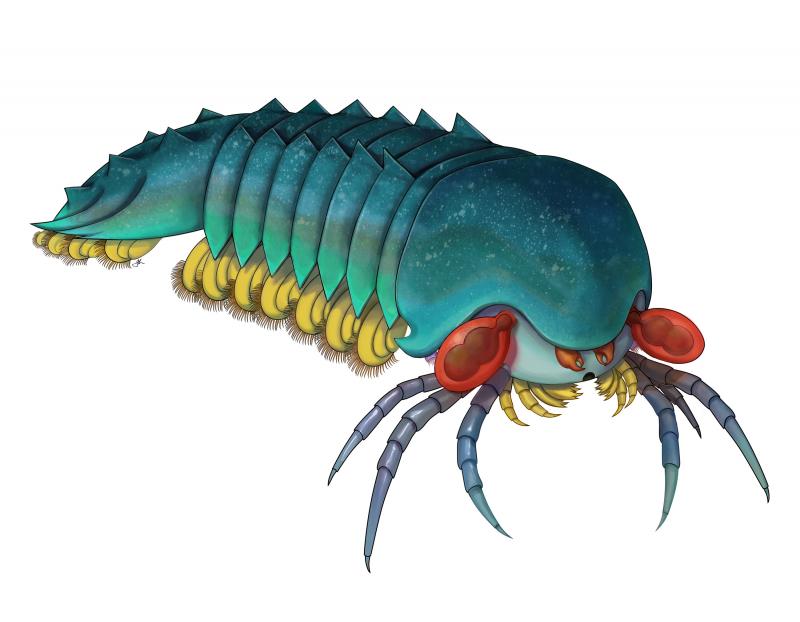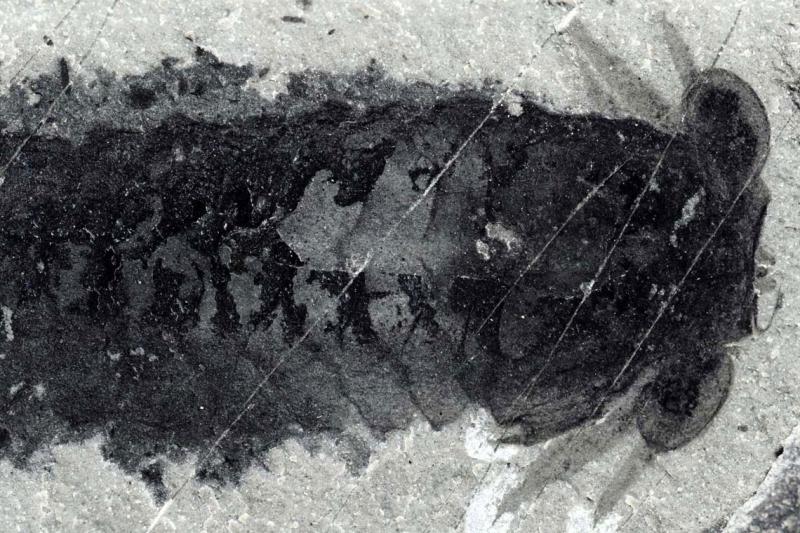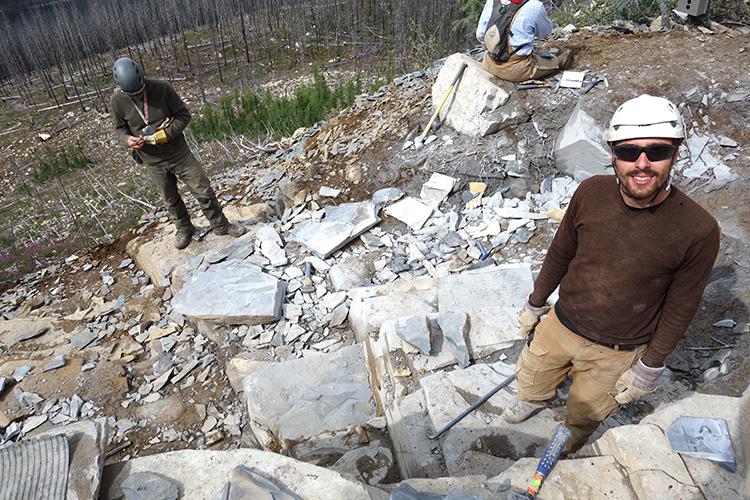September 12, 2019 | Research
U of T alumnus and colleagues discover tiny, 500-million-year-old predecessor to scorpions and spiders
By Faculty of Arts & Science

Reconstruction of Mollisonia plenovenatrix (image courtesy of Joanna Liang, Royal Ontario Museum)
A U of T alumnus and fellow paleontologists working on the world-renowned Burgess Shale have revealed a new species named Mollisonia plenovenatrix, which they describe as the oldest member of a group of animals called chelicerates. The discovery places the origin of this vast group of animals – over 115,000 species including horseshoe crabs, scorpions and spiders – to a time more than 500 million years ago, near the beginning of the Cambrian Period.
The findings were published this week in Nature.
Mollisonia plenovenatrix would have been a fierce predator – for its size. As big as a thumb, the creature boasted a pair of large egg-shaped eyes and a “multi-tool head” with long walking legs, as well as numerous pairs of limbs that could altogether sense, grasp, crush and chew.
But, most importantly, the new species also had a pair of tiny pincers in front of its mouth, called chelicerae. These appendages give rise to the name chelicerates and are used to kill, hold and, sometimes, cut their prey.

“Before this discovery, we couldn’t pinpoint the chelicerae in other Cambrian fossils, although some of them clearly have chelicerate-like characteristics,” says Cédric Aria (PhD 2017), lead author of the Nature study and a recent graduate from University of Toronto’s department of ecology and evolutionary biology in the Faculty of Arts & Science.
“This key feature, this ‘coat of arms’ of the chelicerates, was still missing.”
Other features of this fossil, including back limbs likened to gills, further suggest that Mollisonia’s body already resembled those of modern species and was not some primitive version of a chelicerate.
“Chelicerates have what we call either book gills or book lungs,” explains Aria, a member of the Royal Ontario Museum’s Burgess Shale expeditions since 2012 and currently a post-doctoral fellow at the Nanjing Institute of Geology and Palaeontology in China.
“They are respiratory organs made of many collated thin sheets, like a book. This greatly increases surface area and therefore gas exchange efficiency. Mollisonia had appendages made up with the equivalent of only three of these sheets, which probably evolved from simpler limbs.”

Aria and co-author Jean-Bernard Caron (PhD 2015), the curator of invertebrate palaeontology at the ROM and an associate professor at U of T’s department of Earth sciences, believe that Mollisonia hunted close to the sea floor – a type of behaviour called benthic predation – thanks to its well-developed walking legs. Because Mollisonia is so modern-looking, chelicerates seem therefore to have prospered quickly, filling in an ecological niche that was otherwise left poorly attended by other arthropods at that time. The authors conclude that the origin of the chelicerates must lie even earlier within the Cambrian, when the heart of the “explosion” really took place.
“Evidence is converging towards picturing the Cambrian explosion as even swifter than what we thought,” says Aria.
“Finding a fossil site like the Burgess Shale at the very beginning of the Cambrian would be like looking into the eye of the cyclone.”

